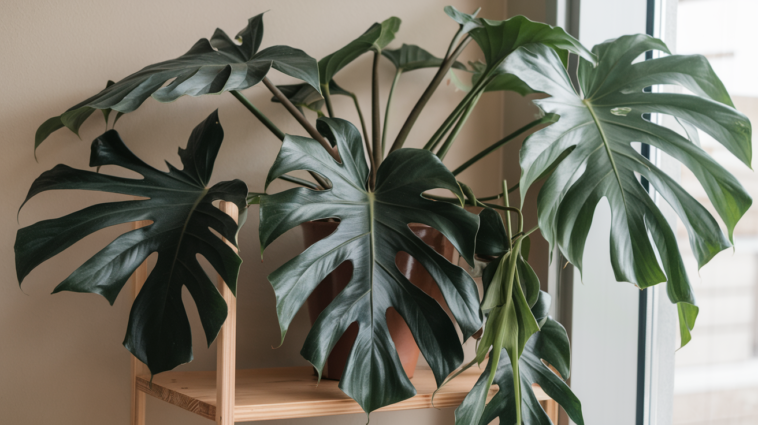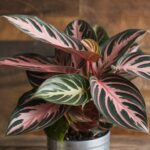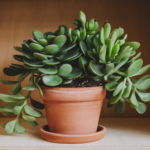I’ve always been drawn to houseplants, and the Philodendron has won my heart. It’s perfect for beginners because it’s easy to care for. Plus, it can grow well in different light conditions, making it ideal for any room.
Philodendrons are known for their beautiful, heart-shaped leaves. They’re a great way to add life and beauty to your home. Whether you’re new to indoor gardening or have lots of experience, Philodendrons are a wonderful choice.
Why I Fell in Love with Philodendron
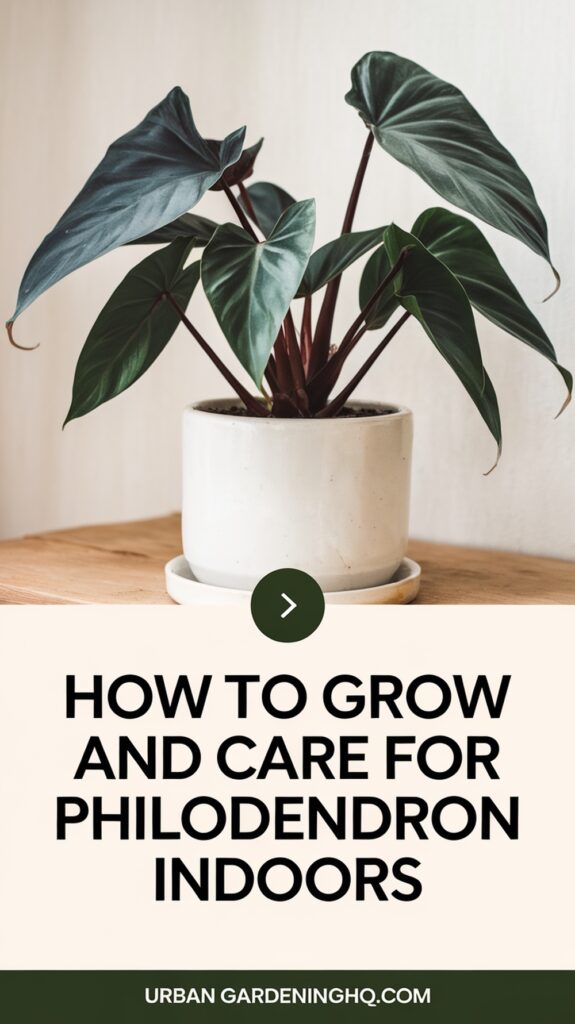
My journey to improve my indoor decor led me to low-maintenance plants. Philodendrons stood out because they are easy to care for and versatile. My first experience with a Philodendron was amazing. It quickly settled into its new home, needing little care.
Philodendrons caught my eye because they can grow well in many conditions. They also clean the air and look great, making them perfect for indoor gardens. Growing Philodendrons offers many benefits, such as:
- They are easy to care for, great for busy people
- They purify the air, making your home healthier
- They fit well in different decor styles
Exploring Philodendrons further, I saw their value goes beyond looks. They’ve become a key part of my decor, bringing natural beauty to my space. Their ease of care and many benefits make Philodendrons a favorite in many homes, including mine.
Understanding Different Types of Philodendron
Exploring the world of Philodendron reveals a wide variety of species. With over 700 types, it’s clear why Philodendron is a favorite among houseplant lovers. You can find everything from small, trailing plants to larger, upright ones, fitting any space or style.
Popular types include the Heartleaf Philodendron with its delicate leaves and the Split-Leaf Philodendron with its unique, split leaves. The Velvet Philodendron has soft, velvety leaves, and the Philodendron Selloum has large, lobed leaves. Knowing about these varieties helps you pick the best plant for your home and care for it properly.
When picking a Philodendron, think about the light, temperature, and humidity it needs. Some types do well in low light, while others need bright, indirect light. Choosing the right Philodendron for your space lets you enjoy their beauty and benefits, like purifying the air and adding to your home’s look.
Here are a few key things to consider when choosing a Philodendron:
- Lighting requirements: Some Philodendron types require low light, while others need bright, indirect light.
- Temperature and humidity: Most Philodendron types prefer temperatures between 65-75°F (18-24°C) and moderate humidity.
- Space and growth habits: Consider the mature size of the plant and its growth habits, such as trailing or upright.
Essential Care Tips for Your Philodendron
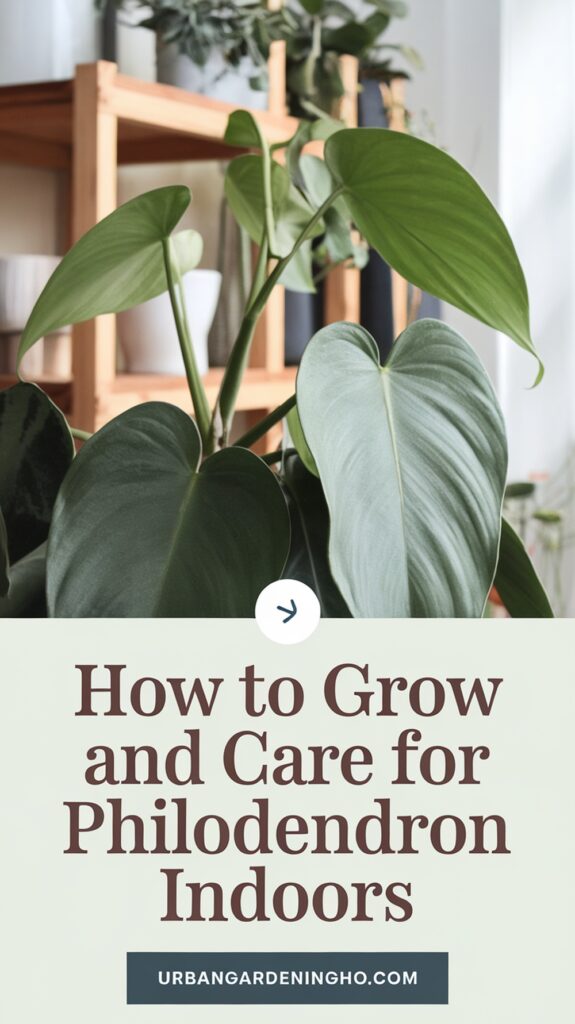
Philodendrons are great for indoor gardening because they’re easy to care for. To keep your philodendron happy, you need to know what it needs. They’re not too picky, but they do need some care to grow well.
Water Requirements
Watering your philodendron right is key. Too much water can cause root rot, while too little can turn the leaves yellow. Check the soil by sticking your finger in it up to the first knuckle. If it’s dry, it’s time to water.
For more tips on caring for your plants, check out indoor gardening resources.
Light Conditions
Philodendrons can handle different light levels, from low to bright. This makes them perfect for indoor spaces. They can go from a sunny windowsill to a shady corner.
Soil and Fertilizer Needs
The right soil and fertilizer help your philodendron grow strong. Use a potting mix that drains well and a balanced fertilizer. This will give your plant the nutrients it needs.
Temperature and Humidity
Keeping the temperature and humidity right is important. Most philodendrons like temperatures between 65-75°F (18-24°C). They also prefer a humidity level of 40-60%.
Creating the Perfect Growing Environment
Exploring indoor gardening, I’ve learned that a great environment is key for houseplants to grow well. Philodendrons need a habitat that’s close to their natural one. This means using a potting mix like Miracle-Gro for nutrients. For more tips, check out the indoor gardening section on Miracle-Gro’s website.
For the best growing space, consider these points:
- Temperature: Keep it between 65°F to 75°F (18°C to 24°C)
- Lighting: Indirect light is best for philodendrons
- Humidity: Aim for 50-60% humidity
By focusing on these aspects and proper care, your philodendron will flourish. Indoor gardening is a fulfilling hobby. With the right methods and tools, you can create a beautiful display of plants that enhance your space.
| Factor | Ideal Condition |
|---|---|
| Temperature | 65°F to 75°F (18°C to 24°C) |
| Lighting | Indirect light |
| Humidity | 50-60% |
Propagation Methods That Actually Work
Exploring indoor gardening, I found the joy of plant propagation. It’s a fun way to share plants and grow your collection. For philodendrons, there are several methods to try. With practice, you’ll master these techniques and enjoy your indoor garden.
Some popular methods include:
- Stem cutting: This involves cutting a section of the stem, removing lower leaves, and planting it in soil or water.
- Water propagation: This method involves placing the stem cutting in a glass of water until roots develop, making it a great option for those new to plant propagation.
- Soil propagation: This method involves planting the stem cutting directly in soil, where it can develop roots and grow into a new plant.
By mastering these techniques, you’ll enjoy the rewards of indoor gardening. You can share your love of houseplants with others. Whether you’re experienced or new, propagating philodendrons is a great skill to learn.
Common Problems and Their Solutions

As a houseplant lover, I’ve seen my share of issues with philodendrons. Pests and diseases can harm these plants. It’s vital to spot problems early and fix them right away. Taking good care of your plants helps avoid these problems.
Common issues include spider mites, mealybugs, and root rot. You can treat these with insecticidal soap or by changing the plant’s environment. For example, spider mites go away when you make the air more humid. Mealybugs need a direct treatment with insecticidal soap. Knowing how to handle these problems keeps your philodendron happy and healthy.
Here are some common problems and their solutions:
- Spider mites: Increase humidity, use insecticidal soap
- Mealybugs: Use insecticidal soap, isolate infected plants
- Root rot: Adjust watering schedule, improve drainage
By following these tips, you can keep your philodendron in top shape. Remember, preventing problems is the best way to care for your plants. With the right care, your philodendron will bring joy and beauty to your home for many years.
Styling Your Space with Philodendrons
Philodendrons are great for adding elegance to any room. Their trailing vines and beautiful leaves make them perfect for climbing walls or sitting on shelves. They not only beautify your space but also purify the air and bring calm.
There are many ways to display philodendrons. You can hang them in baskets or place them on shelves. They can also climb up walls or trellises. For more ideas and care tips, check out philodendron care guides online.
Display Ideas to Enhance Your Indoor Decor
- Hang philodendrons from baskets to add a touch of greenery to your ceiling
- Place them on shelves to create a stunning display of trailing vines
- Train them to climb up walls or trellises to add a unique touch to your indoor decor
Adding philodendrons to your decor can make your indoor garden beautiful and thriving. They improve your space’s look, purify the air, and bring calm. With their easy care and versatility, philodendrons are perfect for anyone wanting to add houseplants to their decor.
Seasonal Care and Maintenance
As a houseplant lover, I’ve learned that the right care is key, even with seasonal changes. Knowing what my Philodendron needs at different times helps it stay healthy. It’s important to adjust my care routine to meet these changing needs.
In spring and summer, my Philodendron grows fast, needing more water and food. This is the best time to focus on its care, ensuring it gets the nutrients it needs. But in fall and winter, it grows slower, so I need to change how I care for it.
Spring and Summer Care
- Water my Philodendron more often to keep the soil moist
- Fertilize regularly to help it grow strong and healthy
- Prune or train the plant to keep it looking good
Fall and Winter Adjustments
- Water less often, letting the soil dry a bit between waterings
- Fertilize less, once a month, as it grows slower
- Keep my Philodendron away from cold and drafts
By following these seasonal care tips, I can keep my Philodendron happy and healthy. Whether you’re new to houseplants or have been caring for them for years, understanding seasonal care is key. It makes a big difference in your plants’ health and happiness.
| Season | Watering Frequency | Fertilization |
|---|---|---|
| Spring/Summer | Every 2-3 days | Every 2 weeks |
| Fall/Winter | Once a week | Once a month |
Advanced Growing Tips for Thriving Philodendrons
As I care for my philodendrons, I’ve learned that advanced techniques are key. Pruning is vital for their health and looks. It keeps them in shape and encourages new growth. Regular pruning boosts their leaf production and strength.
Repotting is another important step. It gives my plants a fresh start in new soil. This lets me check their roots and spot any problems early.
Grow lights are also a big help, mainly in darker months. They add to the natural light, helping my plants grow. When picking grow lights, look at spectrum, intensity, and coverage to meet your plants’ needs.
Other tips for growing philodendrons include:
- Keeping them in temperatures between 65-75°F (18-24°C) for growth
- Keeping humidity at 50-70% to match their natural home
- Fertilizing with a balanced, water-soluble fertilizer for nutrients
By using these advanced techniques, my philodendrons thrive. With pruning, repotting, grow lights, and the right conditions, your plants can flourish too. Enjoy the benefits of indoor gardening with these tips.
Conclusion: Growing Success with Your Philodendron Journey
Exploring the world of Philodendrons shows how these houseplants can brighten any indoor garden. Knowing the different types, the key care tips, and solving common problems will help you grow strong Philodendrons. These plants will add beauty and clean the air in your home.
Starting or continuing your plant journey with a Philodendron is very rewarding. This guide will help your Philodendron not just survive but thrive. It will become a beloved part of your home.
Enjoy the process of caring for these amazing plants. Let your Philodendron journey inspire, relax, and make you proud. With proper care, your Philodendron will flourish. It will bring a lush, tropical feel to your home for many years.
